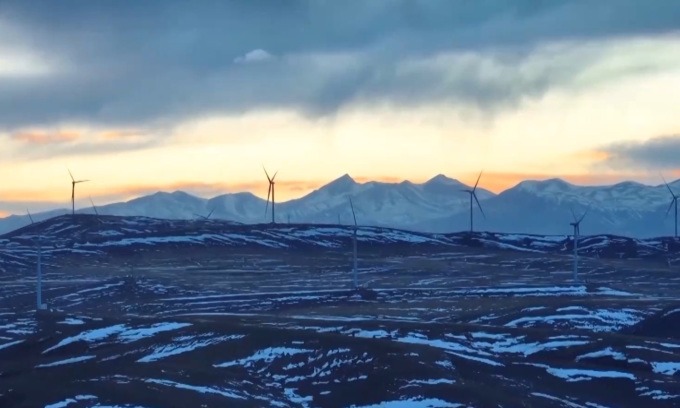The 100-megawatt (MW) wind farm is at an altitude of 4,650 meters in the Seni District. A wind farm built at 3,500 to 5,500 meters is considered ultra-high.

Its developer, CHN Energy, will use the wind farm for R&D to further develop large-scale ultra-high-altitude wind farms. But in the meantime, this wind farm is providing clean electricity to 140,000 households in Nagqu City, the largest of Tibet’s prefecture-level cities.
This wind farm’s turbine must be resilient in Tibet’s harsh weather conditions – extreme sun, wind, sand, rain, and snow – and be able to withstand drastic temperature changes.
Hu Jiansheng, head of the project, told China Media Group that a smart wind power platform was used to design the wind farm. He said, “With stability control technology, we have overcome the problems caused by the ultra-high altitude, including the low efficiency of wind energy conversion and the deceleration of wind turbines’ blades.”
The turbines’ blades are longer to increase the swept area and thus improve efficiency in low atmospheric pressure. Hu also said that the developers “invented a special technique to spray the outer layer of the paint to effectively prevent it from turning too dry and crispy, mitigating the aging of other exposed parts of the wind turbines.”
The $90.3 million wind farm was built in around 260 days despite the harsh conditions. Its 25 turbines, spread over 140,000 square meters, are expected to provide about 200 million kWh of electricity annually, reducing carbon dioxide emissions by about 160,000 tones.
According to the electrek














